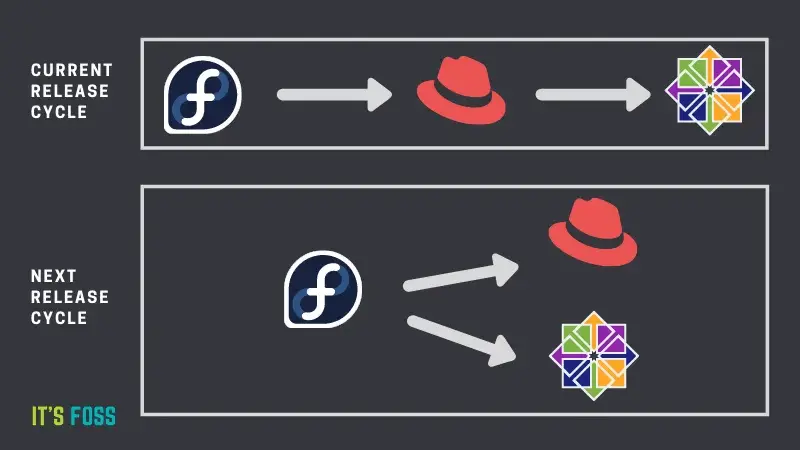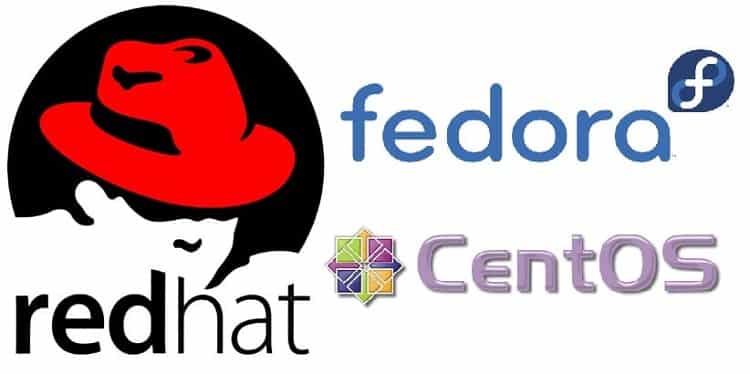CentOS vs. Fedora Workstation: The Best Red Hat-based Distro

CentOS and Fedora are two of the most popular Red Hat-based Linux distributions. They both share the same underlying technology, but they have different target audiences and use cases.

CentOS is a stable and reliable distribution that is ideal for servers and production environments. It is based on Red Hat Enterprise Linux (RHEL), which is one of the most widely used enterprise Linux distributions. CentOS is known for its stability, security, and long-term support.

Fedora is a bleeding-edge distribution that is ideal for desktop users and developers. It is based on the latest upstream Red Hat code, and it includes the latest features and updates. Fedora is known for its cutting-edge technology, its community involvement, and its short release cycle.
So, which distribution is right for you? If you need a stable and reliable distribution for your server or production environment, then CentOS is a good choice. If you want a bleeding-edge distribution with the latest features and updates, then Fedora is a good choice.
Here is a table that summarizes the key differences between CentOS and Fedora:
| Feature | CentOS | Fedora |
|---|---|---|
| Target audience | Servers and production environments | Desktop users and developers |
| Base | Red Hat Enterprise Linux | Latest upstream Red Hat code |
| Stability | Stable and reliable | Bleeding-edge |
| Update cycle | Long-term support | Short release cycle |
| Community involvement | Large community of users and contributors | Large community of users and contributors |
Ultimately, the best distribution for you depends on your specific needs and preferences. If you are unsure which distribution to choose, you can try out both of them and see which one you prefer.## Centos Vs. Fedora Workstation: The Best Red Hat-based Distro
Executive Summary
CentOS and Fedora Workstation are both popular Linux distributions based on Red Hat Enterprise Linux (RHEL). However, there are some key differences between the two distros that make them more suitable for different purposes. CentOS is a stable, enterprise-grade distro that is ideal for servers and other mission-critical applications. Fedora Workstaion, on the other hand, is a more bleeding-edge distro that is better suited for desktops and laptops.
Introduction
When choosing a Linux distribution, it is important to consider your specific needs and requirements. If you need a stable, reliable distro for servers or other mission-critical applications, entonces CentOS is a good option. If you are looking for a more up-to-date distro with the latest features and technologies, then Fedora Workstation is a better choice.
CentOS: Stable and Reliable
CentOS is a stable, enterprise-grade Linux distribution that is based on RHEL. It is one of the most popular distros for servers and other mission-critical applications. CentOS is known for its stability and reliability, and it is often used in production environments where uptime is critical.
-
Long-term support: CentOS has a long-term support (LTS) policy that provides updates for 10 years. This makes CentOS a good choice for organizations that need a stable platform that will not change frequently.
-
Widely tested: CentOS is widely tested and used by a large community of users. This means that any bugs or issues are likely to be quickly identified and fixed.
-
Numerous software packages: CentOS has a large number of software packages available in its repositories. This makes it easy to find and install the software you need.
-
Compatible with RHEL: CentOS is compatible with RHEL, which means that software and and configurations that work on RHEL will also work on CentOS.
-
Free and open source: CentOS is free and open source, which means that you can use it and modify it without paying any fees.
Fedora Workstation: Cutting-edge and Innovative
Fedora Workstation is a cutting-edge Linux distribution that is based on RHEL. It is one of the first distros to get the latest features and technologies, and it is a popular choice for developers and other users who want to be on the bleeding edge of Linux.
-
Up-to-date software: Fedora Workstation is always up-to-date with the latest software, including the latest versions of the GNOME desktop environment and other popular applications.
-
New features: Fedora Workstation is often the first distro to get new features and technologies. This makes it a good choice for users who want to try out the latest and greatest that Linux has to offer.
-
Extensive customization: Fedora Workstation is highly customizable, and users can easily change the look and feel of the desktop environment to suit their own preferences.
-
Large community: Fedora Workstation has a large and active community of users, which means that there is a wealth of support and documentation available online.
-
Free and open source: Fedora Workstation is free and open source, which means that you can use it and modify it without paying any fees.
Conclusion
CentOS and Fedora Workstation are both excellent Linux distributions. CentOS is a good choice for users who need a stable and reliable distro for servers or other mission-critical applications. Fedora Workstation is a good choice for users who want a more up-to-date distro with the latest features and technologies.
Keyword Phrase Tags
- CentOS vs Fedora
- Red Hat-based Linux distros
- Stable Linux distro
- Cutting-edge Linux distro
- Linux desktop environment


What is the greatest advantage of
FedoraoverCentOS? You sure notice the simplicity ofFedora! It’s just incredible!In this regard,
CentOSis a winner for it doesn’t have something likeSELinuxto deal with. If you need a stable,CentOSis the best.In the professional sector, especially web servers, most use
CentOS. The fact thatCentOSis a stable version ofRHELmakes it a perfect choice for production environments, in addition to its corporate support, which is unmatched.In the hands of the right user,
Fedorais faster thanCentOS. But with many programs installed it becomes slower. If you’re going to install many applications anyway, useCentOSand you’ll be better off.I had never installed
Fedorabefore and it was easier than I thought. You’re guided step by step without complications and the partitioning process is clear.Fedora has several versions but the most important of all is the
Workstation. Dedicated to desktops with theGNOMEgraphical environment. It is free, open source and easy to use.If we talk about
Fedorawithout a doubt we are talking about a bleeding edge and free distribution. And if we talk about CentOS well… It’s just a server-oriented distro for business environments.The binary compatibility maintained between
CentOSandRHELis a great help that allows me to install applications fromRHELon myCentOSwithout any problem. And its popularity is undeniable.I always find myself having problems installing
Fedoraon my computers. But I think it’s a temporary issue. However, I think it is a fantastic distribution focused on new technologies and that I will keep trying to install.